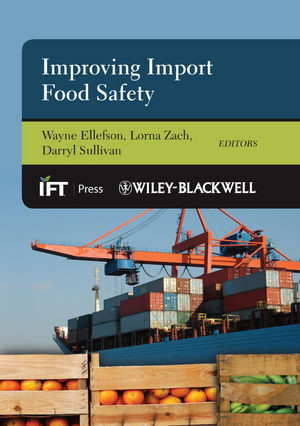

Most ebook files are in PDF format, so you can easily read them using various software such as Foxit Reader or directly on the Google Chrome browser.
Some ebook files are released by publishers in other formats such as .awz, .mobi, .epub, .fb2, etc. You may need to install specific software to read these formats on mobile/PC, such as Calibre.
Please read the tutorial at this link: https://ebookbell.com/faq
We offer FREE conversion to the popular formats you request; however, this may take some time. Therefore, right after payment, please email us, and we will try to provide the service as quickly as possible.
For some exceptional file formats or broken links (if any), please refrain from opening any disputes. Instead, email us first, and we will try to assist within a maximum of 6 hours.
EbookBell Team

0.0
0 reviewsFood safety has been a global concern for many years. While global sourcing of foods and ingredients provides great opportunity for variety and diversity of cultural products, there are significant risks. Programs that regulate food safety and quality in countries around the world vary in their scope and effectiveness, with many being underfunded. Rapidly developing countries may lack the expertise, laboratory resources for testing, and established inspection programs to adequately promote the safety of foods. Rather, these countries may be more focused on providing enough food for their citizens. Lack of documentation or traceability in the exporting country can further exacerbate the situation. Of course, safety problems in food imported from more developed countries also occur, and the source of food borne disease outbreaks are found regularly within the United States.
Improving Import Food Safety gathers together vital information on the food safety programs of national governments, the food industry, and the testing industry. Chapters have been contributed by authors from the United States, Latin America, Europe, and Asia. Readers will learn about a variety of regulatory approaches to food safety at the federal and state levels in the United States, as well as in selected countries and within the food industry itself. They will also gain insights into the nature and source of safety problems, in addition to approaches to food safety around the world.
The book is divided into three sections:
Readers will find this book noteworthy because of the diverse topics and perspectives offered on the challenges of keeping food safe in a global economy. Authors come from a variety of backgrounds, and each has provided a unique perspective on this critical topic. The volume is aimed at importers and exporters of food and ingredients; food microbiologists, food safety and QC/QA personnel; regulatory and legal personnel in food manufacturing companies; food policy makers and regulatory officials and facility and graduate students in food science.
Content: